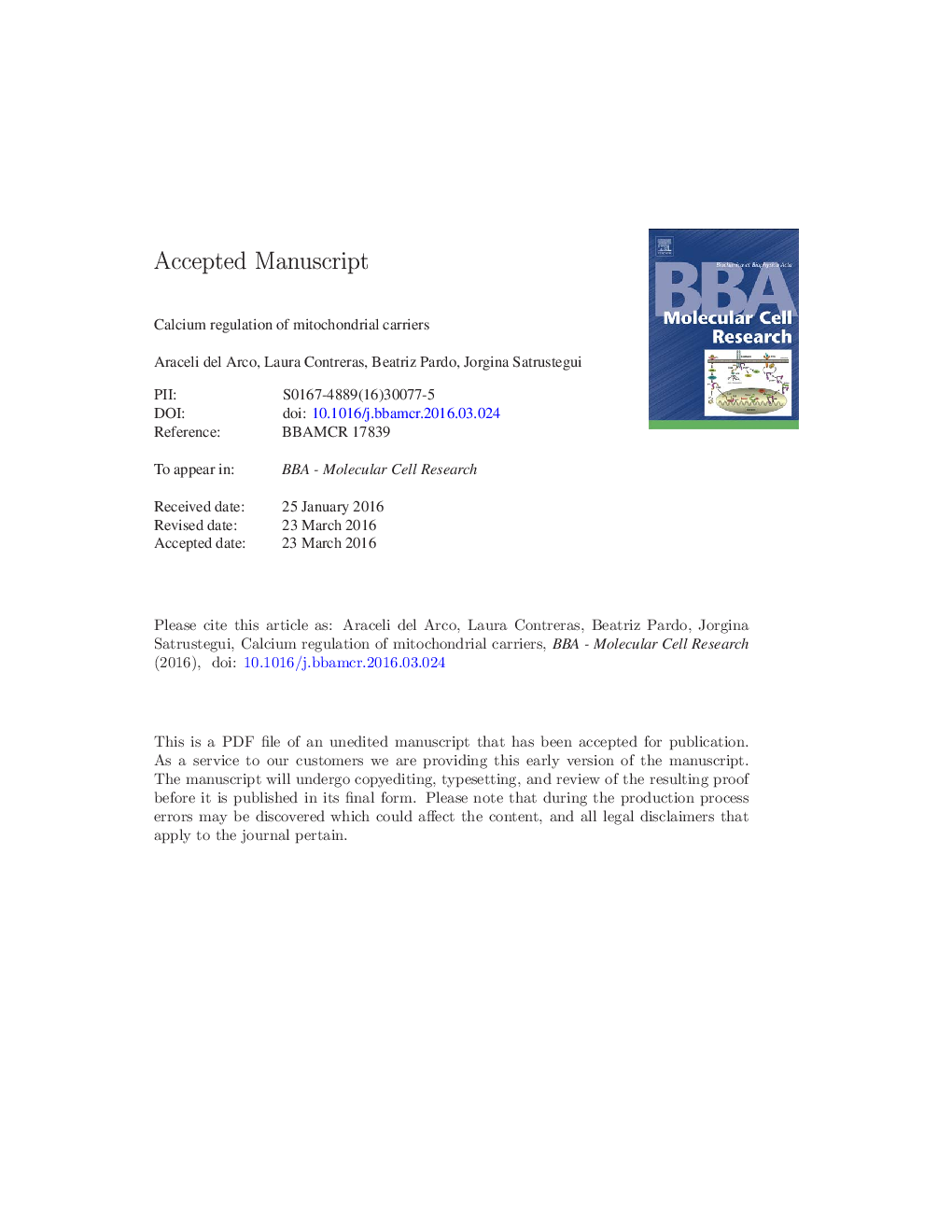| Article ID | Journal | Published Year | Pages | File Type |
|---|---|---|---|---|
| 10801611 | Biochimica et Biophysica Acta (BBA) - Molecular Cell Research | 2016 | 27 Pages |
Abstract
Mitochondrial function is regulated by calcium. In addition to the long known effects of matrix Ca2Â +, regulation of metabolite transport by extramitochondrial Ca2Â + represents an alternative Ca2Â +-dependent mechanism to regulate mitochondrial function. The Ca2Â + regulated mitochondrial transporters (CaMCs) are well suited for that role, as they contain long N-terminal extensions harboring EF-hand Ca2Â + binding domains facing the intermembrane space. They fall in two groups, the aspartate/glutamate exchangers, AGCs, major components of the NADH malate aspartate shuttle (MAS) and urea cycle, and the ATP-Mg2Â +/Pi exchangers or short CaMCs (APCs or SCaMCs). The AGCs are activated by relatively low Ca2Â + levels only slightly higher than resting Ca2Â +, whereas all SCaMCs studied so far require strong Ca2Â + signals, above micromolar, for activation. In addition, AGCs are not strictly Ca2Â + dependent, being active even in Ca2Â +-free conditions. Thus, AGCs are well suited to respond to small Ca2Â + signals and that do not reach mitochondria. In contrast, ATP-Mg2Â +/Pi carriers are inactive in Ca2Â + free conditions and activation requires Ca2Â + signals that will also activate the calcium uniporter (MCU). By changing the net content of adenine nucleotides of the matrix upon activation, SCaMCs regulate the activity of the permeability transition pore, and the Ca2Â + retention capacity of mitochondria (CRC), two functions synergizing with those of the MCU. The different Ca2Â + activation properties of the two CaMCs are discussed in relation to their newly obtained structures. This article is part of a Special Issue entitled: Mitochondrial Channels edited by Pierre Sonveaux, Pierre Maechler and Jean-Claude Martinou.
Related Topics
Life Sciences
Biochemistry, Genetics and Molecular Biology
Biochemistry
Authors
Araceli del Arco, Laura Contreras, Beatriz Pardo, Jorgina Satrustegui,
